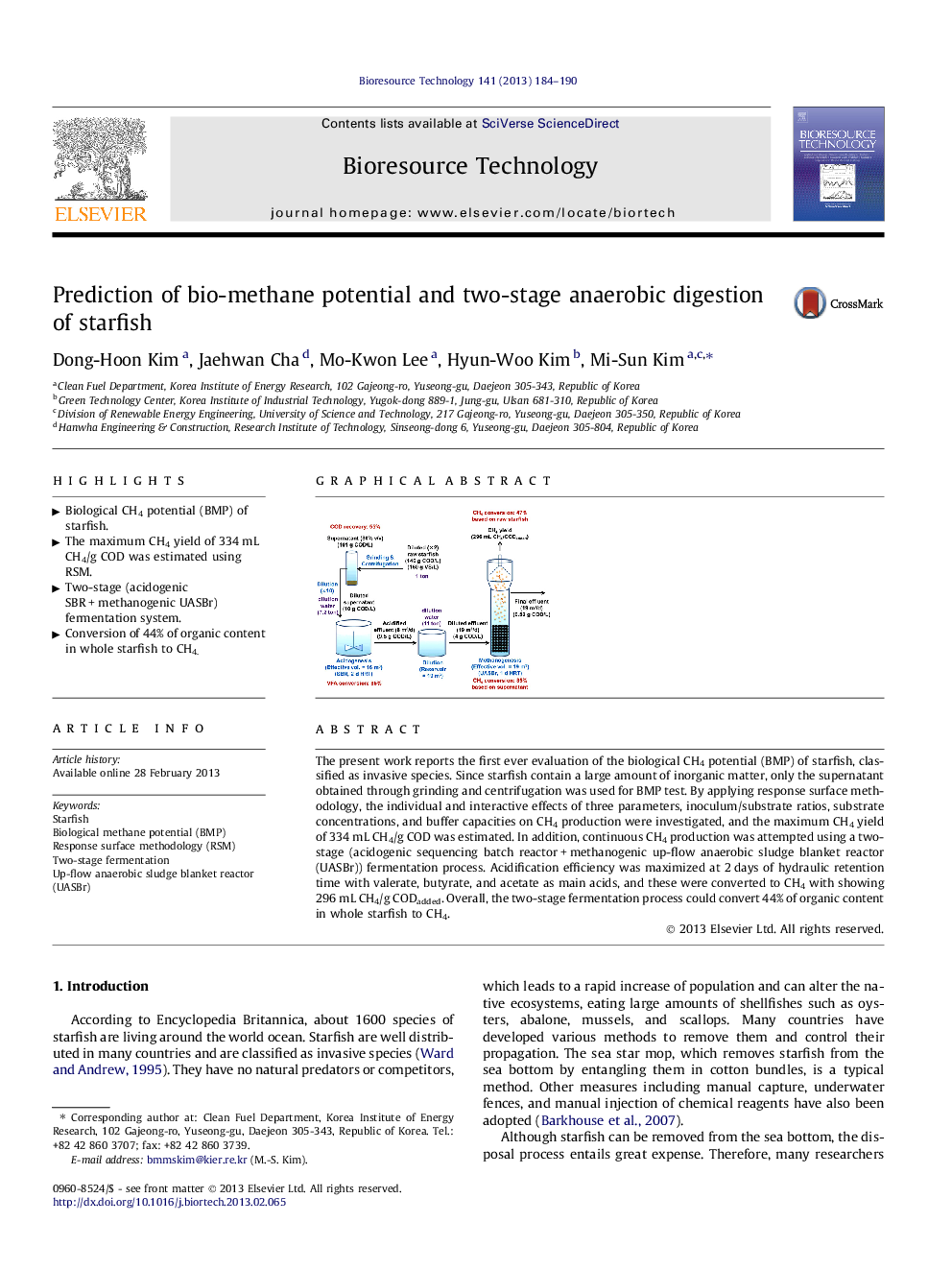| Article ID | Journal | Published Year | Pages | File Type |
|---|---|---|---|---|
| 681105 | Bioresource Technology | 2013 | 7 Pages |
The present work reports the first ever evaluation of the biological CH4 potential (BMP) of starfish, classified as invasive species. Since starfish contain a large amount of inorganic matter, only the supernatant obtained through grinding and centrifugation was used for BMP test. By applying response surface methodology, the individual and interactive effects of three parameters, inoculum/substrate ratios, substrate concentrations, and buffer capacities on CH4 production were investigated, and the maximum CH4 yield of 334 mL CH4/g COD was estimated. In addition, continuous CH4 production was attempted using a two-stage (acidogenic sequencing batch reactor + methanogenic up-flow anaerobic sludge blanket reactor (UASBr)) fermentation process. Acidification efficiency was maximized at 2 days of hydraulic retention time with valerate, butyrate, and acetate as main acids, and these were converted to CH4 with showing 296 mL CH4/g CODadded. Overall, the two-stage fermentation process could convert 44% of organic content in whole starfish to CH4.
Graphical abstractFigure optionsDownload full-size imageDownload as PowerPoint slideHighlights► Biological CH4 potential (BMP) of starfish. ► The maximum CH4 yield of 334 mL CH4/g COD was estimated using RSM. ► Two-stage (acidogenic SBR + methanogenic UASBr) fermentation system. ► Conversion of 44% of organic content in whole starfish to CH4.
